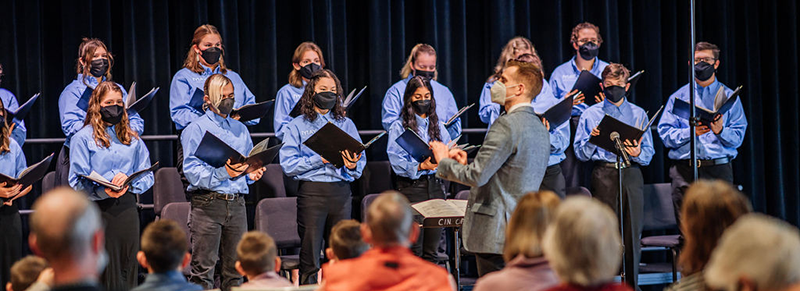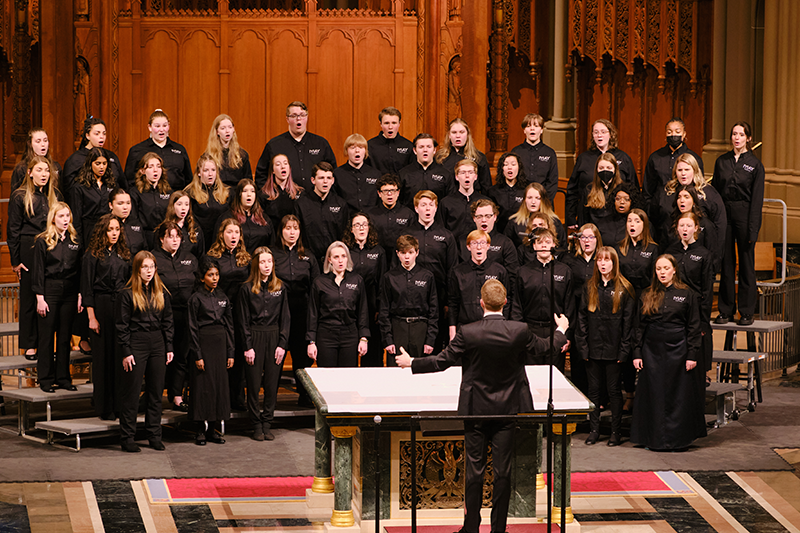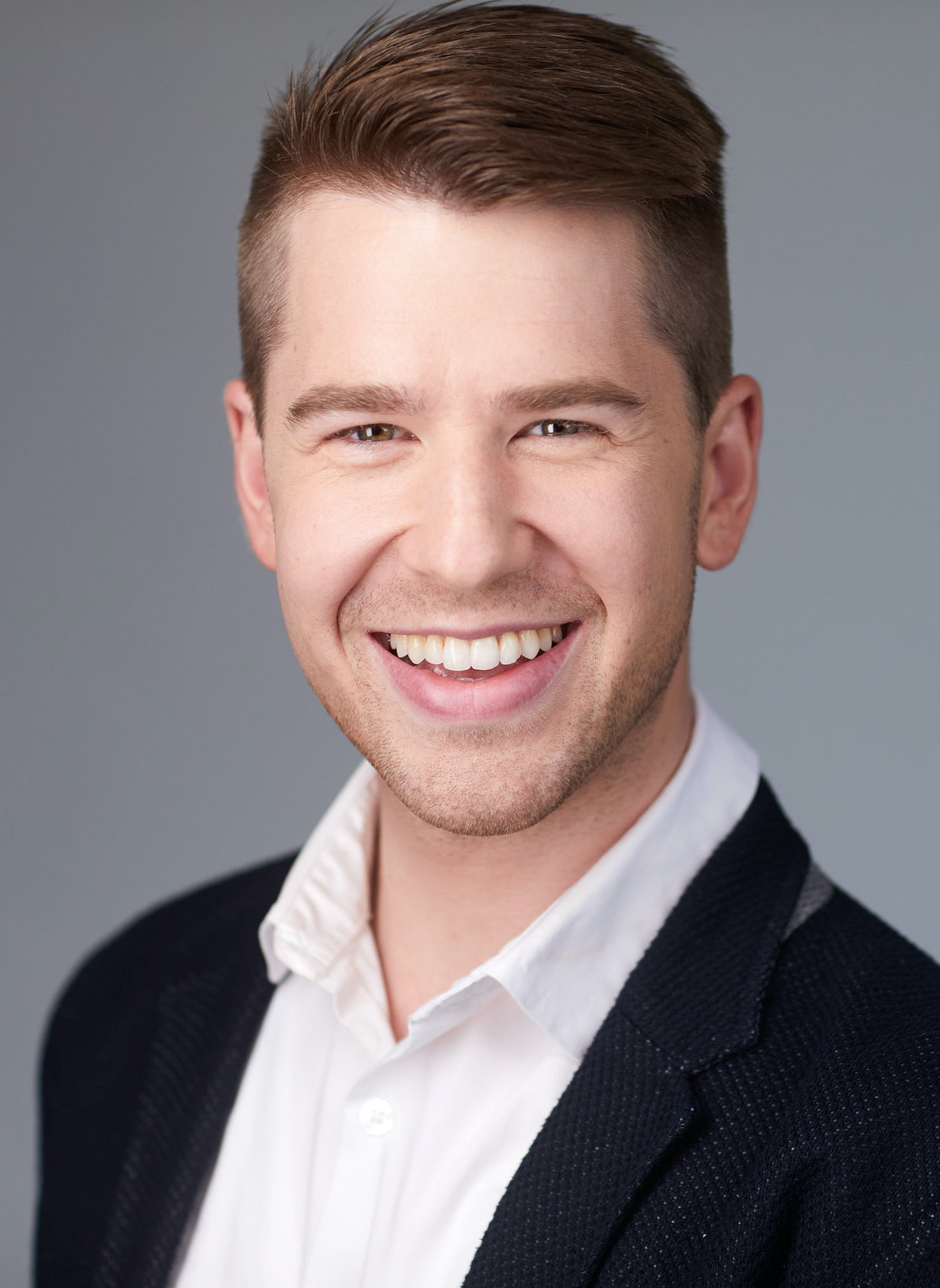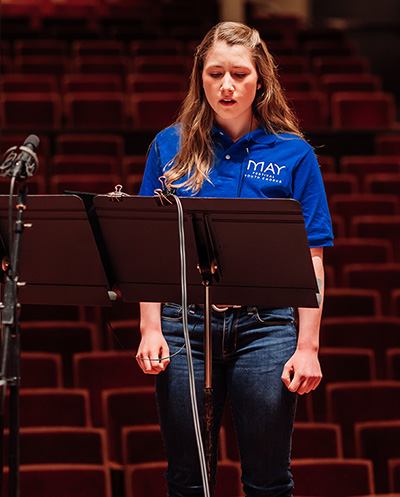
Celebrating 35 Years of the May Festival Youth Chorus
by David Lewellen
The May Festival Youth Chorus straddles two worlds. For one, its existence is artistically necessary: to supply the sound of young voices for concerts when the repertoire requires it. It also provides those same young voices with an invaluable music education.

“It offers students the same opportunity that adults receive, to perform choral repertoire at a very high level,” said Matthew Swanson, the director of the Youth Chorus, which is celebrating its 35th anniversary this season. Singing with the adults and with the Cincinnati Symphony “requires the same things we hope to instill in them every week in our rehearsals: self-confidence, musical independence and a love of singing.”
“I love the fact that we have a youth chorus,” said Robert Porco, the May Festival’s Director of Choruses. “It’s experience they can’t get anywhere else.”
This spring, the teens will perform the part written for children’s choir in John Adams’ oratorio El Niño, with the composer conducting. They appear only in the final movement of the evening-long work, and “it brings a whole new perspective and energy to the piece,” Swanson said. “The students have fallen in love with it. We’ve talked about what it will feel like to enter the stage of Music Hall late at night and change the emotional and aural picture of the entire room. I’m thrilled for them.”

The Youth Chorus sings a program of its own during the May Festival’s annual spring concert in the Cathedral Basilica of the Assumption in Covington, KY, and it joins the adult chorus for some works that would not overtax their developing voices. And it also sings in works for which the composer specified a children’s chorus, such as El Niño and I Have Something to Say.
For the last 200 years or so, the word “chorus” has usually meant four parts with adult voices. Many composers have written specifically for the pure, prepubescent sound of a children’s chorus. But teenagers whose voices and bodies are changing require special consideration.
“They’re all going through a voice change,” Swanson said. “The vocal folds are growing, the body is growing, the head is growing, all at different rates. And their perception of their own singing can be confusing. Familiar actions suddenly feel unfamiliar.”
Porco said, “It’s a very delicate age, and they’re lucky to have someone like Matthew,” who can be sensitive to the state of their voices without trying to make them sound like adults.
Every director who leads a symphony chorus has to be flexible. Swanson doesn’t know exactly what Porco will want when he rehearses the teens along with the adults, and Porco in turn doesn’t know exactly what John Adams will want. “We build the flexibility in,” Porco said, although when the conductor finally arrives, “I am seldom shocked.”
When Porco works with the teens, “the musical goals are the same, but it’s a slightly different method of communication,” he said. “They won’t get some of the jokes I might tell the adult choir. That’s a gift Matthew has and I’m not sure I have.”
“I try to communicate like they’re professional musicians,” Swanson said, “but I am interested in what’s going on in their lives. I do keep in touch with what’s on top of the charts. It’s more difficult to be a teen these days than it was when I was a teen, but their affection for art certainly binds generations together.”
The Youth Chorus is smaller now than in past decades—partly due to the pandemic, partly to more demands on teenagers’ time—and Swanson is trying to cast a wider net for recruiting. “At this age, lack of skill often means lack of opportunity,” he said. “If they have a clear voice and a good ear, I’m enthusiastic to take them on.” Students can learn to read music and get ear training as part of their MFYC experience. The program is free to all participants, including parking and tickets to Cincinnati Symphony concerts.

Those free concerts, along with the vocal and musical experience, “guided me to the path that I’m on today,” said Daniel Moody, who is now a professional countertenor. “I can’t say enough about the program.”
Relatively few alumni become professional singers, of course, but “a lot of us eventually wound up doing something in music, whether in education or as a hobby,” said Moody, who grew up in New Richmond and whose parents still live there. His brother and sister also performed with the group and have gone on to other careers, but still enjoy concerts.
As a countertenor, Moody had an extra helping of vocal uncertainties to navigate as a teenager. James Bagwell, the director at the time, put him in the alto section, and “he took good care to warm us up. He took 15 or 20 minutes to do different exercises, which helped with our own learning.”

That kind of training also helps the current generation of singers. Private voice lessons and weekly musicianship exercises have been “super beneficial for me,” said Anna Varisco, a home-schooled senior from Anderson Township. “I definitely grew as a musician.” She hopes to go on to a career in organ and church music, for which her singing experience would be valuable background.
As a senior in her third year with the group, Varisco is now one of the leaders, and she notices the younger students emulating the older ones. “Everyone is trying to be the best musician they can be,” she said. “It’s not really competitive, but we’re encouraging each other to be better.”